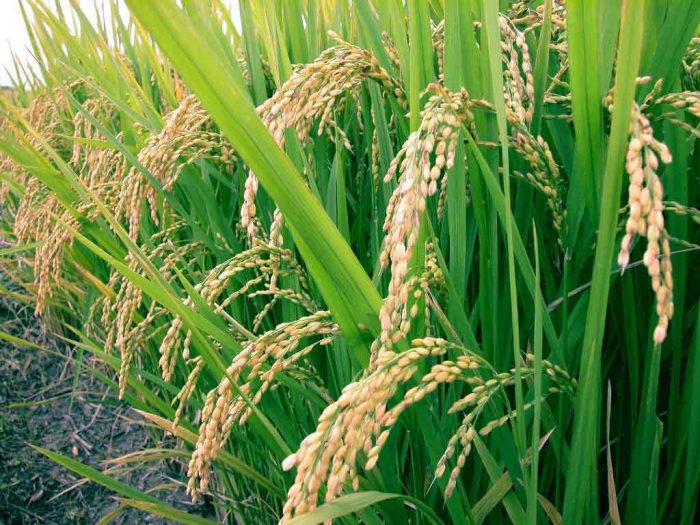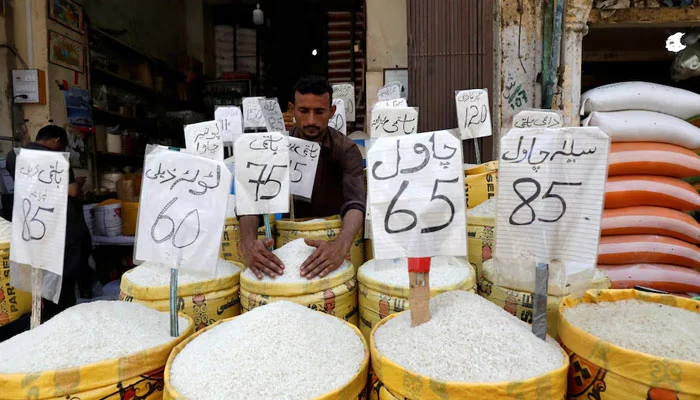
The White Gold of Pakistan: Cotton’s Economic Impact
July 24, 2024
Revolutionize Your Soil with Vermi Compost, A Sustainable Solution for Better Crop Yields
July 25, 2024Rice, a staple food for more than half of the world’s population, is highly susceptible to various environmental and biological stresses. In recent times, farmers have faced significant challenges with rice crop losses, with many seeing a devastating 70-80% reduction in yield. This situation has prompted an urgent search for effective solutions to save the remaining crops and ensure food security. Among the various interventions explored, the use of Nato and Ezabian sprays has emerged as a potential remedy.
Optimal Timing for Spraying Nato and Ezabian on Rice Crops
Rice farmers face numerous challenges, from pest infestations to disease outbreaks that can severely impact their yields. To combat these issues, the use of Nato and Ezabian sprays has become increasingly popular. However, the effectiveness of these treatments depends heavily on the timing of their application. Knowing the optimal times to spray Nato and Ezabian can make a significant difference in crop health and productivity.
Best Times to Apply Nato and Ezabian
Early Growth Stage:
Nato Spray: Early in the rice growing season, young plants are particularly vulnerable to pest infestations. Applying Nato spray at the early growth stage helps to protect seedlings from pests such as rice borers and leafhoppers. This early intervention prevents pests from establishing and spreading, ensuring the plants have a healthy start.
Ezabian Spray: Applying Ezabian during the early growth stage can boost the plants’ natural defenses against diseases. It also promotes vigorous growth, helping seedlings to establish strong roots and healthy shoots.
Understanding the Crisis
Rice crops are vulnerable to a multitude of threats, including pests, diseases, and unfavorable weather conditions. These factors can lead to significant yield losses, affecting both the livelihood of farmers and the global food supply. The recent surge in crop losses has underscored the need for immediate and effective measures to mitigate these impacts.
The Promise of Nato and Ezabian Sprays
Nato and Ezabian are two agricultural sprays that have gained attention for their potential to combat the factors contributing to rice crop loss. Here’s a closer look at each:

- Nato Spray: Nato is a broad-spectrum agricultural spray known for its efficacy in pest control. It targets a wide range of pests that commonly infest rice fields, such as rice borers, leafhoppers, and plant hoppers. By reducing pest populations, Nato helps to protect the plants from damage and improve their overall health.
- Ezabian Spray: Ezabian is a plant growth regulator and disease control agent. It helps to strengthen the plants’ natural defense mechanisms against diseases such as rice blast and sheath blight. Additionally, Ezabian promotes better growth and development, ensuring that the rice plants are more resilient to stress factors.
How Nato and Ezabian Work Together
When used in combination, Nato and Ezabian provide a comprehensive approach to protecting rice crops. Nato addresses the immediate threat of pests, while Ezabian boosts the plants’ health and resistance to diseases. This dual action not only helps to prevent further crop loss but also supports the recovery of already damaged plants.
Application and Best Practices
For optimal results, it’s crucial to follow best practices when applying Nato and Ezabian sprays:
- Timing: Apply the sprays at the early stages of infestation or disease onset. Early intervention is key to minimizing damage.
- Dosage: Use the recommended dosage as specified by the manufacturers. Overuse or underuse can reduce the effectiveness of the sprays.
- Coverage: Ensure thorough coverage of the plants, especially the leaves and stems where pests and diseases are most likely to attack.
- Monitoring: Regularly monitor the fields for signs of pests and diseases. Early detection allows for timely application of the sprays.
Conclusion
The loss of 70-80% of rice crops is a severe blow to farmers and the global food supply chain. However, with the strategic use of Nato and Ezabian sprays, there is hope for mitigating these losses and safeguarding future yields. By understanding the benefits and best practices associated with these sprays, farmers can take proactive steps to protect their crops and ensure a more stable and secure food production system.
There are many crops in Pakistan on which export and import business will be done.
Others CropsThe blog has been written Knowledge and Ideas from farmers comments on social media.
Sindh Abadgar Board




